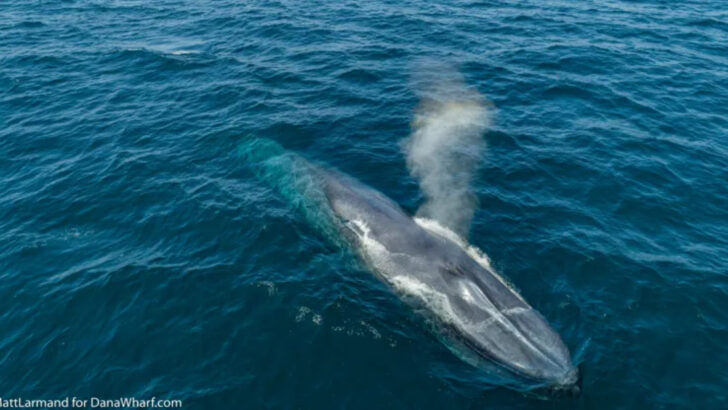The vast ocean is home to colossal creatures that play pivotal roles in maintaining marine ecosystems.
These magnificent giants not only captivate with their size and presence but are also integral to oceanic balance.
From the mysterious depths to the bustling surface, each of these ocean giants contributes uniquely to the health and stability of marine life.
Whether through their actions, interactions, or sheer existence, they uphold the delicate harmony of the seas.
This post explores 14 such ocean giants, shedding light on their fascinating roles and the importance they hold in the watery realms they inhabit.
Blue Whale
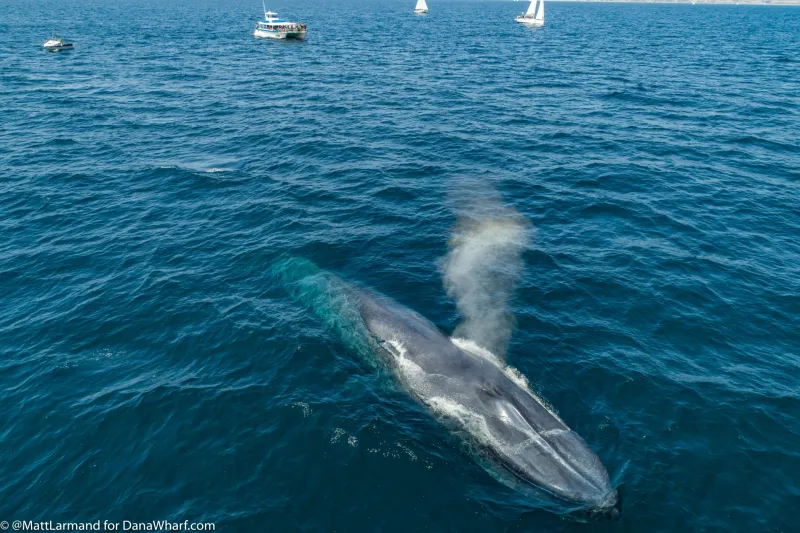
The blue whale, the largest animal to inhabit our planet, graces the ocean with its immense presence. Known for its colossal size, reaching up to 100 feet, it filters small krill through its baleen plates.
Despite its enormity, it feeds on some of the tiniest creatures in the sea, highlighting an intriguing paradox. The blue whale’s deep, resonant calls can travel for miles, facilitating communication across vast ocean expanses.
This gentle giant plays a crucial role in nutrient cycling, as its fecal plumes provide essential nutrients that support marine life growth.
Humpback Whale
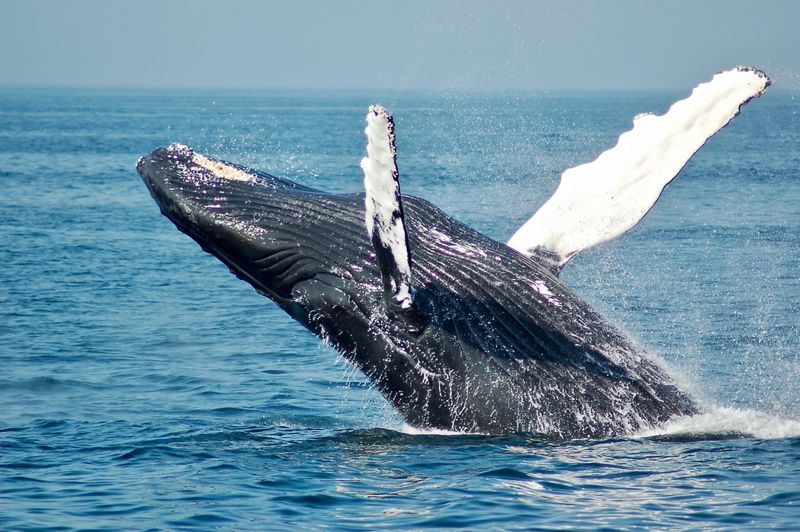
With their acrobatic breaches and haunting songs, humpback whales are stars of the ocean. These charismatic creatures are known for their complex vocalizations, often referred to as “songs,” which can last for hours.
Their songs are a mystery to scientists, believed to play a role in mating or navigation. Humpbacks migrate thousands of miles annually, from feeding grounds to breeding waters.
Their presence in different marine environments helps regulate ecosystems, ensuring balance. Additionally, their flippers, known as “pectoral fins,” can be up to a third of their body length, aiding in agile movements.
Sperm Whale
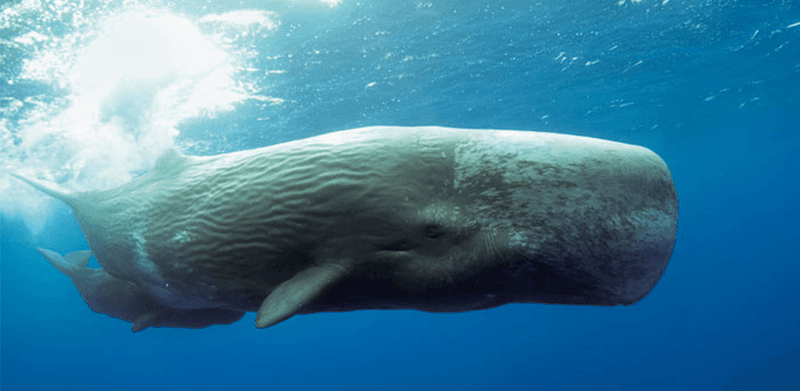
Sperm whales, with their massive heads and deep-diving capabilities, are enigmatic inhabitants of the ocean. Famous for diving up to 3,000 meters in search of squid, they hold records for some of the deepest dives among mammals.
Their clicks, used for echolocation, are among the loudest sounds produced by any animal. These clicks help them navigate the dark ocean depths and hunt elusive prey.
Sperm whales have large, complex brains, sparking curiosity about their intelligence and social structures. Their social pods are matriarchal, with females leading intricate family groups.
Orca
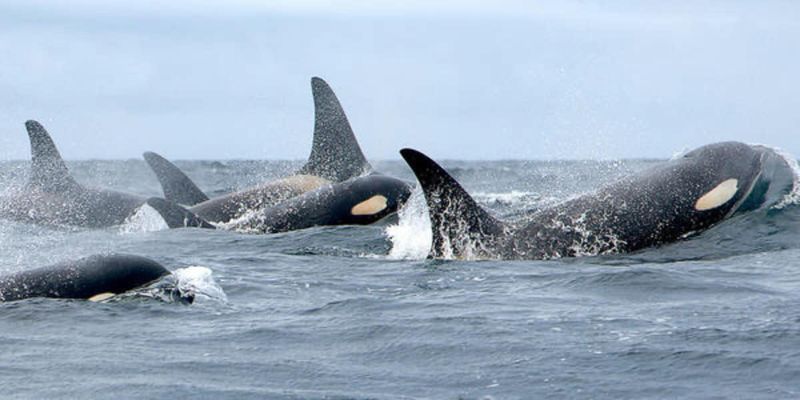
Often called “wolves of the sea,” orcas are top predators with complex social structures. These intelligent marine mammals hunt in pods, employing sophisticated strategies to capture prey.
Their diet varies by region, including fish, seals, and even whales. Orcas communicate using a range of vocalizations, each pod having distinctive “dialects.”
Their presence indicates a healthy marine ecosystem, as they occupy a critical position in the food chain. Known for their striking black and white pattern, orcas captivate observers with their grace and power.
Great White Shark
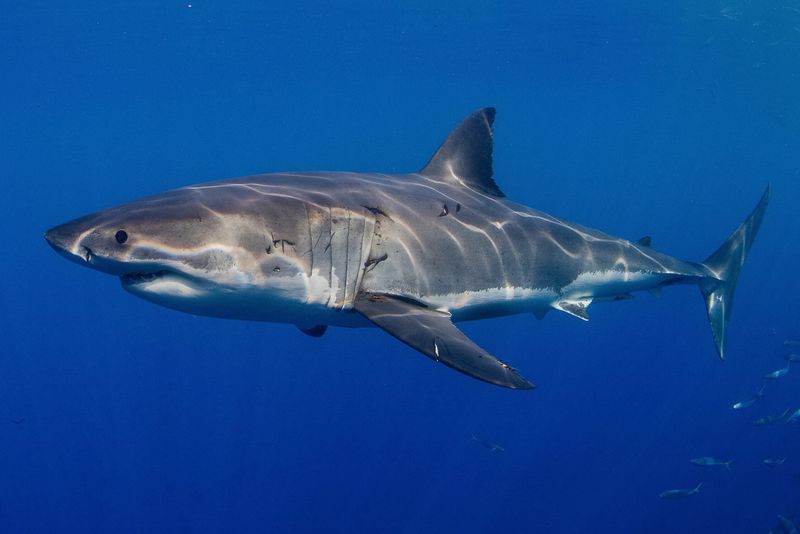
The great white shark, an apex predator of the sea, commands respect and awe. Known for its keen senses, particularly its excellent sense of smell, it detects prey from miles away.
These sharks are crucial to marine health, controlling the population of other marine species, and thus maintaining balance. Surprisingly, they exhibit curiosity and intelligence, often studying potential prey before attacking.
Their powerful build is complemented by a torpedo-shaped body, allowing swift and precise movements. Great whites are solitary hunters but gather at specific times and places for feeding.
Giant Manta Ray
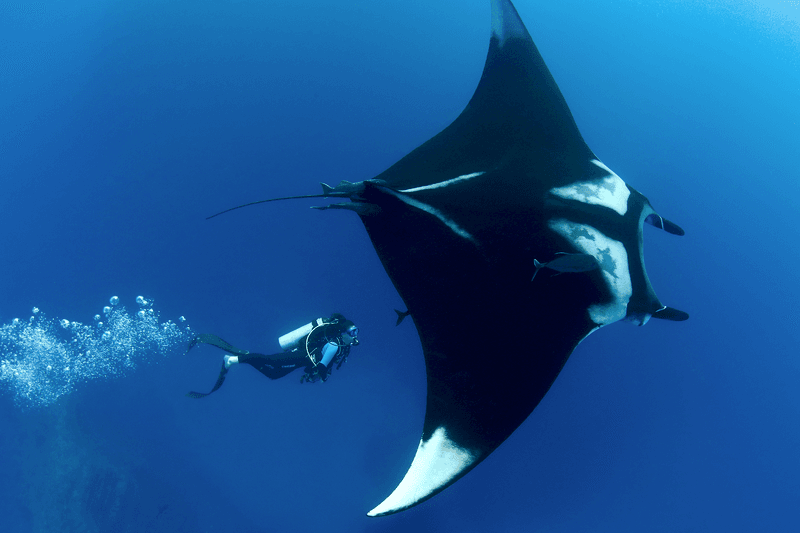
Giant manta rays, with wingspans reaching over 20 feet, are gentle giants of the sea. Known for their intelligence and curiosity, they often interact with divers, displaying playful behaviors.
These filter-feeders consume plankton by swimming with their mouths open, using specialized gill rakers. Mantas migrate across oceans, playing roles in nutrient distribution as they travel.
Their unique “winged” appearance and graceful movements make them mesmerizing to watch. Despite their size, they are vulnerable to threats like fishing and habitat loss, highlighting the need for conservation efforts.
Leatherback Sea Turtle
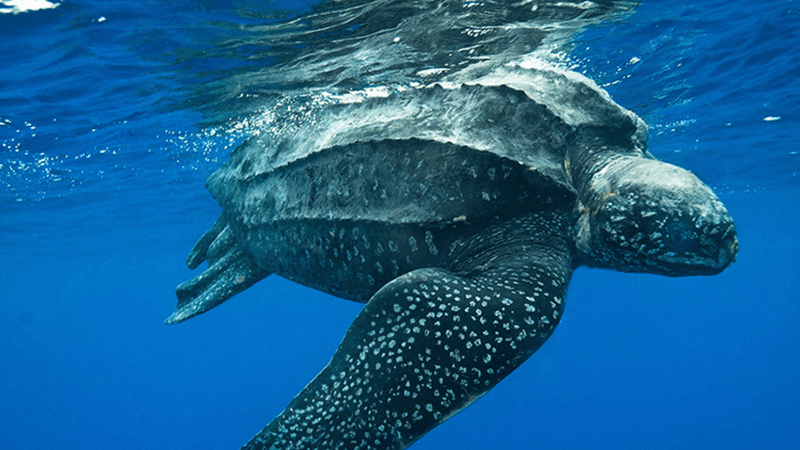
The leatherback sea turtle, the largest of all turtles, navigates vast oceanic distances. Unlike other turtles, it has a flexible, leathery shell, allowing it to endure cold waters.
Leatherbacks dive deep, often reaching depths of over 1,200 meters, in search of jellyfish, their primary diet. These ancient mariners play a role in controlling jellyfish populations, preventing imbalances.
Their long migrations are marvels of navigation, guided by the earth’s magnetic field. Conservation efforts are crucial for their survival, as they face threats from pollution and bycatch in fishing operations.
Ocean Sunfish

The ocean sunfish, or mola mola, captivates with its bizarre, disk-like shape. As one of the heaviest bony fish, it can weigh over 2,000 pounds.
Despite their size, sunfish are gentle and feed mainly on jellyfish. Their peculiar appearance includes a truncated body and long, wing-like fins that propel them gracefully.
Sunfish bask near the water’s surface, sometimes being mistaken for sharks due to their dorsal fins. They play a role in controlling jellyfish populations, contributing to marine ecosystem balance.
Basking Shark
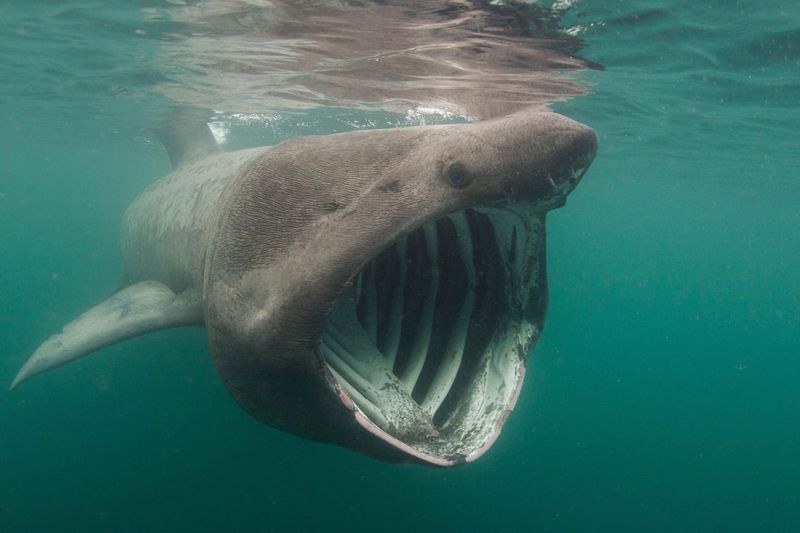
Basking sharks, the second-largest fish, are filter-feeders like the mighty blue whale. Their gaping mouths can be over three feet wide, capturing plankton as they swim.
Despite their daunting size, they are harmless to humans, embodying the ocean’s gentle giants. These sharks are often seen basking in sunlight near the water’s surface, hence their name.
Their presence is vital to marine ecosystems, aiding in plankton population control. Conservationists monitor basking sharks closely, as they face threats from overfishing and habitat degradation.
Colossal Squid

The elusive colossal squid, with eyes as large as dinner plates, inhabits the dark, frigid depths of the Southern Ocean. Despite its name, it remains largely a mystery to scientists.
These creatures have hooked tentacles, aiding in capturing prey like fish and other squid. Their massive size and deep-sea habitat make encounters rare, sparking intrigue and fascination.
Colossal squids are key predators in their ecosystem, maintaining balance by preying on various species. Studying them helps scientists understand deep-sea life dynamics and the challenges of extreme ocean environments.
Japanese Spider Crab
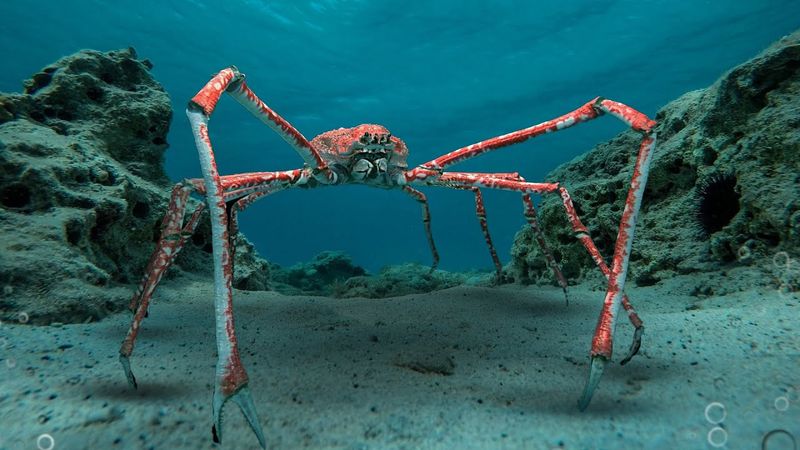
The Japanese spider crab, with its spindly legs spanning over 12 feet, resembles a creature from the deep. This crustacean inhabits the waters around Japan, thriving at depths of up to 600 meters.
Despite its menacing appearance, it is a scavenger, helping to clean the ocean floor by consuming dead organisms. Its long limbs allow it to navigate the rugged ocean terrain with ease.
These crabs are known for their longevity, living up to 100 years in some cases. Understanding their role aids in appreciating the diversity and complexity of marine life.
Green Sea Turtle
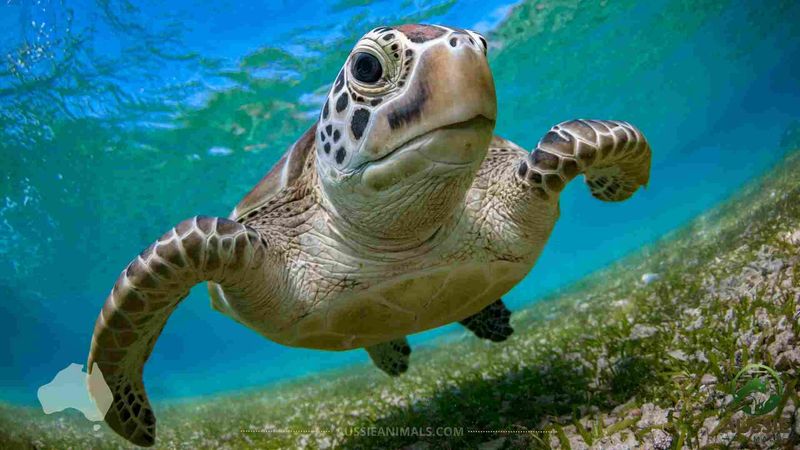
Green sea turtles, named for the color of their body fat, are symbols of marine grace. These herbivores graze on seagrasses and algae, playing a role in maintaining healthy seagrass beds.
Their migratory journeys span thousands of miles, using Earth’s magnetic fields for navigation. Green turtles contribute to nutrient cycling within their habitats, supporting broader ecological functions.
They face threats from habitat loss and climate change, necessitating conservation action. Watching a green turtle glide effortlessly through water is a serene and captivating sight, embodying the tranquility of ocean life.
Whale Shark
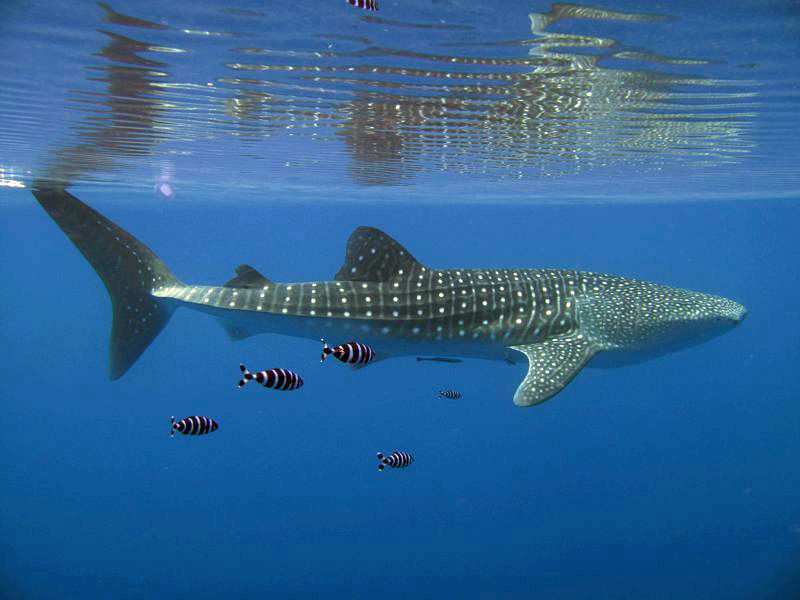
Whale sharks, the largest fish species, inspire awe with their gentle nature. These filter-feeders consume plankton and small fish, often seen near the surface of warm waters.
Their spotted skin patterns are unique, much like human fingerprints, allowing scientists to identify individuals. Whale sharks play a crucial role in nutrient distribution across marine environments.
Their peaceful demeanor and size make them a popular attraction for divers. Despite their grandeur, whale sharks are vulnerable to fishing and habitat destruction, emphasizing the need for protection efforts to ensure their survival.
Giant Pacific Octopus
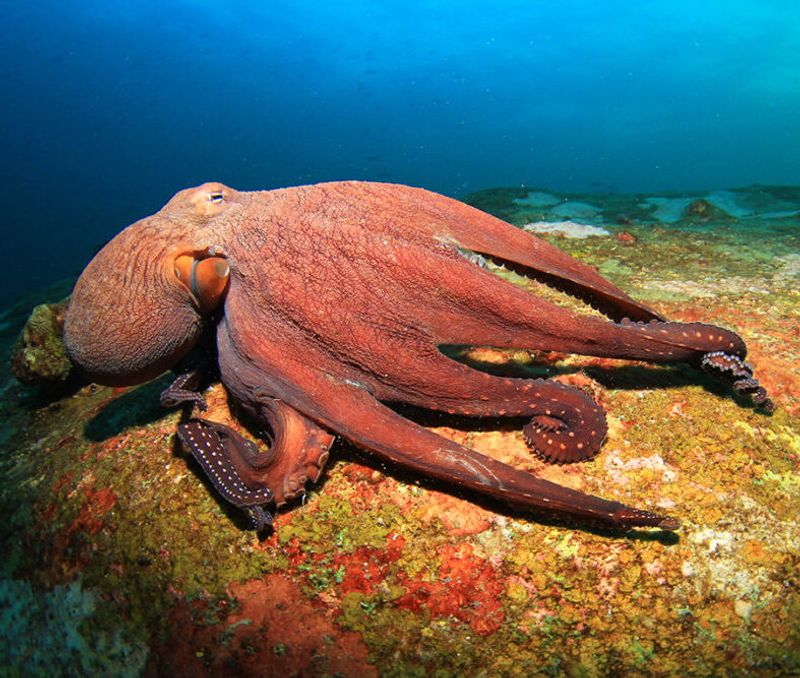
The Giant Pacific Octopus, with its remarkable intelligence, is a master of disguise in the deep blue sea. Known for its ability to change color and texture, this cephalopod can evade predators with ease.
With a mind capable of problem-solving, it opens jars to find its food. Its arms, lined with sensitive suckers, explore the ocean floor meticulously. Not all realize this octopus can grow to over 16 feet in length.
Did you know? Despite their size, these giants are solitary creatures and are rarely seen in groups, preserving the mystery of their underwater realm.

